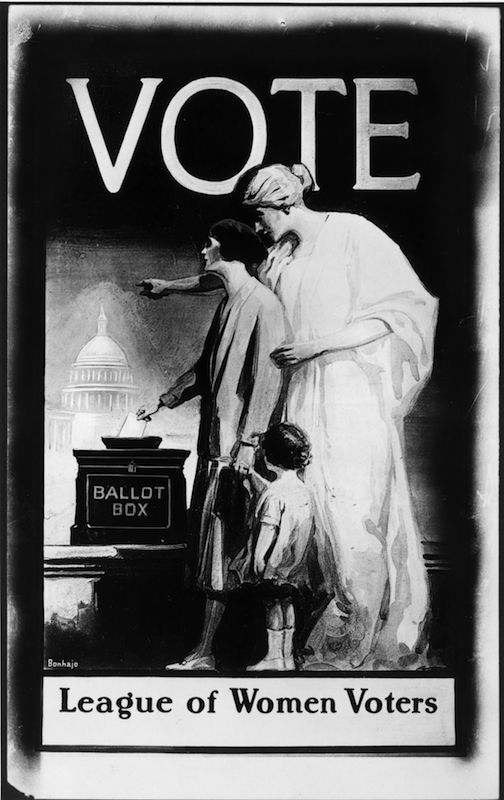
Newspapers called it the “Petticoat Revolution,” dismissing the politically ambitious women of Umatilla, Ore., as nothing more than an oddity. But the coup they staged on Dec. 5, 1916—exactly 100 years ago Monday—proved much more than that.
The tiny town—its current population is around 7,000, but back in 1916 it numbered all of 198—had fallen into disrepair, and no one in office showed much interest in changing things. The local political atmosphere was so complacent, and the good-old-boy network so powerful, that hardly anyone even bothered to vote.
So at a card party in 1916, a group of Umatilla women decided that they not only would vote—which women had been able to do in Oregon since 1912—but that they would vote themselves into positions of power.
As the town’s elections were conducted by secret ballot, “candidates did not have to declare themselves,” and “voters simply wrote in their choices,” as Shelley Burtner Wallace related in an article in the Winter 1987 edition of the Oregon Historical Quarterly.
When the votes were tallied on Dec. 5, 1916, women had taken over the four council seats on the ballot, the positions of recorder and treasurer, and, most notably, Laura J. Starcher had ousted her husband, E.E. Starcher, the incumbent mayor. She won by a landslide count of 26 votes to eight votes.
The outgoing male politicians were stupefied, and E.E. Starcher demanded a recount, according to Jennifer Chambers’ book Remarkable Oregon Women: Revolutionaries & Visionaries. Assuming the recount of less than three-dozen votes was conducted, there was no change in the result. As national attention fixed on a town virtually no one had heard of, Ms. Starcher delivered an adamant victory speech that described the new administration’s specific goals. She also proclaimed that she would “resign right now” if she truly believed that any of the new female council members were less competent than the men who formerly occupied the position.
Get your history fix in one place: sign up for the weekly TIME History newsletter
Starcher’s husband eventually gave her something of an endorsement, describing her to The Oregonian as “the best housekeeper in the United States.”
The new majority-female administration (two men retained council seats that hadn’t been up for reelection) hit the ground running—installing sewers, repairing sidewalks, placing warning signs at railroad crossings and confronting such public nuisances as stray dogs, broken street lights and haggard-looking American flags. “Clean-up Weeks” were organized, so the town could dispense with its garbage.
Although fast improvements were made, Mayor Starcher resigned after less than one year. According to Remarkable Oregon Women, she suffered a series of “nervous breakdowns.”
With Starcher unable to perform, Umatilla’s majority-female council appointed another female mayor, Mrs. H. T. Duncan. However, just one month into her tenure, she went on leave, and later resigned. So again the council appointed a new female mayor, Stella Paulu. She proceeded to provide steady leadership for Umatilla, serving through the original two-year mayoral term, and then winning the ensuing 1918 election.
There was no coup or subterfuge this time. She simply won, receiving about 80% of the overall vote. The majority-female administration had proved itself far more effective than the men who had filled their seats before, providing Umatilla with orderliness and a sense of pride. The town government had also proved itself assertive in times of crisis, appointing a city health official to combat a smallpox epidemic, as told by the Oregon History Project.
When the 1920 election came around, however, no other women were interested in holding office. The political power in Umatilla fell back into the hands of men — though not permanently: Nanci Sandoval, Umatilla’s current City Recorder, points out that Bertha Cherry, one of the original Petticoat Revolutionaries, was elected mayor in 1933.
Meanwhile, the first “petticoat” mayor, Laura Starcher, relocated to Parma, Ida., where “there’s evidence” she ran a beauty salon and delivered mail, according to Richard Cockle’s article in the March 6, 2012, edition of The Oregonian.
It has been reported that the Starchers divorced, but this cannot be confirmed. Census documents provided by the Oregon Historical Society list Laura Starcher as a wife in 1920 and as a widow in 1930. She died in 1960 and is buried in Parma Cemetery in Idaho.
Starcher and the longer-serving mayor Stella Paulu are recognized today by the local museum in Umatilla, where a revolution first regarded as a cute prank resulted in years of adept leadership, and an improved quality of life for men and women alike.
More Must-Reads from TIME
- Why Biden Dropped Out
- Ukraine’s Plan to Survive Trump
- The Rise of a New Kind of Parenting Guru
- The Chaos and Commotion of the RNC in Photos
- Why We All Have a Stake in Twisters’ Success
- 8 Eating Habits That Actually Improve Your Sleep
- Welcome to the Noah Lyles Olympics
- Get Our Paris Olympics Newsletter in Your Inbox
Contact us at letters@time.com